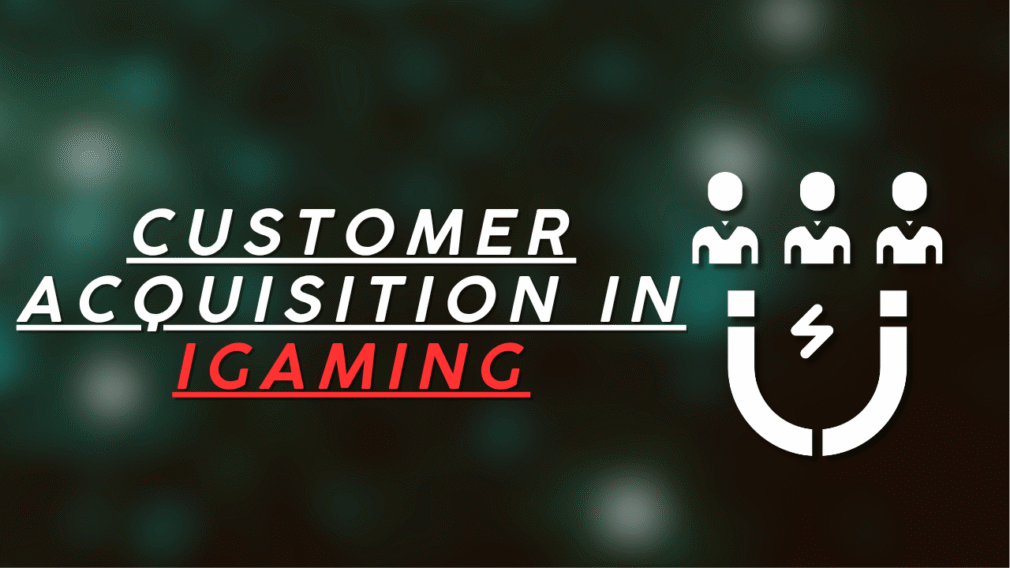Controlling the Cost: Strategies to Lower Customer Acquisition in iGaming
The online gambling (iGaming) market, which includes sports betting, casino games, and sweepstakes, has become extremely competitive. Operators face a major challenge: Customer Acquisition Costs (CAC) are rapidly rising while customer loyalty often remains low. For a business to be profitable, it must control this cost, as acquiring a new player is an estimated five to seven times more expensive than keeping an existing one.

In mature markets like the U.S. and Europe, the cost to acquire a single depositing casino player has increased by roughly 60% since 2019, now ranging between $280 and $1,400 per player. This huge expense forces operators to shift their focus from simply chasing new sign-ups to making every marketing dollar count through efficiency and long-term retention.
What Drives Customer Acquisition Costs in iGaming?
Customer Acquisition Cost (CAC) is the total marketing, sales, and compliance spend divided by the number of new depositing players. This figure includes affiliate fees, paid advertising, sign-up bonuses, and operational costs like Know Your Customer (KYC) verification.
The dramatic rise in CAC is fueled by several key market trends:
- Regulatory Pressure: Strict new rules across markets, including high tax rates and mandatory compliance checks (KYC/AML), add significant overhead to every new account.
- Intense Competition: As more major brands enter the space—especially sportsbooks cross-selling casino games—the price of media inventory, such as digital ads and sponsorships, soars. Bidding wars drive the cost of acquiring high-quality traffic up sharply.
- Affiliate Inflation and Fraud: The cost of affiliate deals (CPA rates) now ranges from $50 to $500 per player.However, rising levels of fraud and a lack of transparency have caused many operators to reduce affiliate budgets and seek more reliable channels.
- Privacy and Attribution Gaps: Changes like cookie deprecation make it harder for operators to track exactly which ad led to a deposit. This uncertainty leads to wasted ad spend and makes it difficult to measure true campaign results.
- Mobile-First Expectations: Players demand instant sign-up, fast loading speeds, and native apps. Operators must invest heavily in friction-less user experience (UX) to prevent potential customers from dropping off.
Key Acquisition Cost Benchmarks
To maintain a healthy business, iGaming operators generally aim for an LTV:CAC ratio of at least 3:1. This means that a customer’s lifetime value should be at least three times the cost spent to acquire them.
Top Operator Strategies to Reduce CAC
Modern operators treat customer acquisition as a precise, data-driven investment rather than a volume game. They focus on minimizing wasted spend and maximizing the value of every new player.
1. Precision Targeting with AI
The first step in reducing CAC is to stop advertising to the wrong people.
- Predictive Analytics: AI tools are used to predict a potential player’s Lifetime Value (LTV) before spending on them. By forecasting which users are most likely to deposit and stay active, operators can adjust media bids to only target high-value leads.
- Real-Time Segmentation: Audiences are segmented by their behavior and preferences. Personalized messages or offers are then delivered only to those users who show a high chance of converting.
- Data-Driven Channel Selection: Operators compare channel-specific CAC. For example, if internal data shows Google Ads produces a CAC of around $150 per depositor versus $250 via Facebook Ads, budget is shifted accordingly to the more efficient channel.
2. Optimizing the User Journey
Traffic driven by expensive ads is worthless if players leave before making a deposit.
- Mobile-First Onboarding: A friction-less sign-up flow—often a single-screen registration or a Progressive Web App—reduces the drop-off rate, directly lowering the effective CAC. Mobile-first design can cut acquisition costs by up to 25%.
- Funnel Analysis: Operators analyze every step of the player funnel, from the first ad click to the first deposit, to identify and fix points where customers are abandoning the process.
- Customer Support as Retention: While acquisition costs soar, operators often overlook support. Investing in fast,24/7 live chat and self-service tools reduces churn, which is critical since speedy issue resolution is cited as the number one retention driver.
3. Diversified and Creative Acquisition Channels
Operators are moving away from relying solely on expensive mass-market advertising and affiliates.
- Programmatic Advertising: These campaigns use real-time bidding and AI to place targeted ads across display,video, and Over-The-Top (OTT) streaming platforms. This high level of control helps reduce fraudulent traffic and improves return on ad spend.
- Influencer Marketing: Instead of costly celebrity endorsements, many brands now partner with mid-tier influencers who act as trust builders within smaller, engaged communities. Sweepstakes casinos, in particular, use influencers to showcase the entertainment value, which keeps acquisition barriers low.
- Content Marketing and SEO: Investing in blogs, sports-specific content, and Search Engine Optimization (SEO) builds sustainable, low-cost organic traffic. Aligning content with E-E-A-T guidelines improves search visibility and trust.
4. Prioritizing Retention and Loyalty
The most effective long-term strategy to combat high CAC is to increase LTV by focusing on existing customers.
- Loyalty Programs: Structured VIP tiers, cash-back programs, and loyalty rewards incentivize continued play.Studies show that loyalty program participation can increase customer lifetime value by up to 43%.
- AI-Powered Offers: Personalized messages and offers based on a player’s betting history are far more effective than generic bonuses. AI models can identify players who are likely to stop playing and automatically trigger a targeted offer to prevent them from leaving.
- Hybrid Commission Models: Operators are innovating in affiliate deals by combining a smaller upfront Cost-Per-Acquisition (CPA) payment with a Revenue Share component. This ensures the affiliate’s income is tied to the long-term quality and retention of the players they deliver.
Recommended
